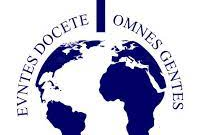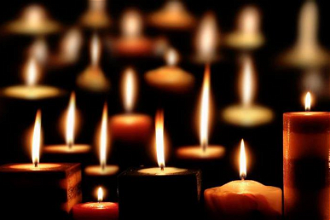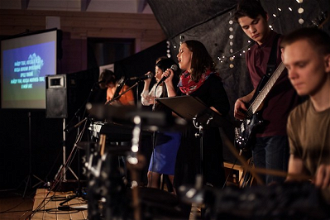Profiles: Fourteen Irish missionaries killed on foreign soil
Source: Catholic Media Office
The following 20th century Irish missionary priests, religious sisters, brothers and laypeople were killed while working on the missions.
Archbishop Michael Courtney, Papal Envoy to Burundi Archbishop Michael Courtney died in Burundi on 29 December 2003 at the age of 58 years, after serving as both pastor and diplomat in the war-torn country for three years. He was killed in an ambush in December while returning from a funeral. The Archbishop had spent three years as Apostolic Nuncio in Burundi. He had cancelled his usual post-Christmas break because of hopes of a breakthrough in the peace process in Burundi. He had played a key role in persuading some of the rebel groups to lay down their arms. Before travelling to Burundi in 2000, Archbishop Courtney had served as the Pontifical Representative of the Holy See in South Africa, Zimbabwe, Senegal, India, Yugoslavia, Cuba and Egypt. He also served as Special Envoy of the Holy See to the Council of Europe and allied institutions in Strasbourg. Archbishop Courtney was ordained in 1968 for the Diocese of Clonfert. He was ordained Bishop in November 2000. He is buried in his native Nenagh.
Fr Rufus Halley, SSC Columban Missionaries Fr Rufus Halley, 57, was a talented linguist and peacemaker who spent more than 20 years promoting Muslim/Christian dialogue in Asia. He was appointed to the Philippines shortly after his ordination to the priesthood at Easter 1969. He lived among the rural poor near the capital of Manila. In 1980, he moved to Mindanao in the south of the Philippines and volunteered to engage in the Columban's work of dialogue with Muslims. In a bid to break down distrust, Fr Rufus integrated with both Christian and Muslim communities by learning two local languages and worked for many years in a store owned by a Muslim selling rice and corn. Fr Rufus died on August 28th 2001 when shot by would-be kidnappers on his way home to his parish. In death, he was mourned by both Christians and Muslims in Mindanao. Both communities kept vigil by his coffin and hundreds of Muslims attended his funeral Mass and burial.
Fr John Heneghan, SSC Columban Missionaries Fr Heneghan, 62, was inspired by the 1916 volunteers to join the missions. At Easter 1916, he heard the confessions of Tuam volunteers on their way to join the Rising and he said to a fellow priest: "If those brave lads are ready to die for Ireland, I, a priest, ought to be ready to die for Christ." Fr Heneghan was one of the first to join the newly founded Maynooth Mission to China (Columban Fathers) in 1916 and was the first editor of the "Far East." He travelled to the Philippines in 1931 when he was 49 years old and administered to the Malate parish in Manila. As a parish for English-speaking people, mostly Americans, the parish was constantly under suspicion by the authorities. To be a European meant to be at risk during the battle for Manila between US and Japanese forces. There is reason to believe that the priests in Malate cooperated with the Filipino underground in smuggling medicines and food to the internees. None of the Columbans in the Malate parish survived to given an account of what happened. Fr Heneghan (62) and four other Columbans died during the battle for Manila in 1943. Their bodies were never found.
Sr Joan Sawyer, Columban Sisters The site where Sr Joan Sawyer was killed has become a place of pilgrimage for people who have family members in prison and who are struggling with poverty and pain. Sr Joan from Donegore in Co Antrim was professed in 1957. She was assigned to the United States in 1971 before being sent to Peru in 1977. While in Peru, Sr Joan worked in both the shanty towns or barriadas of the capital city Lima and the rural communities in the Andes. At that time, Peru was wrecked by civil war. Today, it continues to be scarred by poverty and violence. Sr Joan died on 14 December 1983 while engaged in prison visitation in the notorious prison for men at Lurigancho. After finishing her tasks for the day, she found that three Marist Sisters and two women helpers were being held hostage by nine prisoners. Seven of the nine prisoners and Sr Joan were killed when police opened fire. In 1984, a huge wooden cross was erected where the massacre took place on which was written the names of those who were killed.
Sr Sheila Corcoran OP, Dominican sisters Kerry born Sr Sheila Corcoran left Ireland for South Africa on her 24th birthday and worked there as a teacher for more than 50 years. Sr Sheila trained as a primary teacher in the University of Stellenbosch where she learned Afrikaans. She taught in an inner city school near the Cape Town docks and taught for many years in schools that catered for poorer children. When she became deaf she trained as a remedial teacher at the University of Cape Town and gave individual tuition to black children. While working as bursar at Holy Rosary Convent in Port Elizabeth, Sr Sheila found that one of the sisters was being threatened by a stranger with a knife. She was attacked in the incident. She was brought to hospital but never recovered. She died on 18 July 2000. Doctors testify that her death was the result of the attack. Sr Sheila was born in Kilorglin in 1925. She was aged 75 when she died.
Larry Timmons, OSF, Franciscan Brother Br Larry Timmons from Delvin in Co Westmeath travelled to Kenya in 1980 where he became involved in a series of teaching positions. He became involved in community development in Lare when the area was hit by semi-famine conditions which were caused by drought and crop failure. He became involved in water projects, improving farm methods, raising funds and sinking pumps. He acquired and distributed food and seeds to the local community. Br Timmons went on to build St Clare's Polytechnic which was completed in 1996. Skills based programmes were held in this venue. He was instrumental, as part of a team, in developing a range of projects aimed at improving people's diets. Br Timmons, 48, died in the early hours of Wednesday, January 22nd 1997. Up to 20 robbers came to the compound and robbed money. A policeman arrived and began to shoot. Br Timmons was killed instantly and the robbers escaped unharmed. Br Larry is buried at the Franciscan cemetery in Clara, Co Offaly. The work he began is still being carried on by the Franciscan Brothers and the local community.
Fr Felim McAllister, Holy Ghost Congregation Fr Felim McAllister spent nearly 30 years in a country ravaged by civil war and which has consistently been named today as the world's poorest country. A Holy Ghost Father from Donabate, Fr Felim was ordained in 1967 and was appointed to Sierra Leone in west Africa in 1968. During the first three years, he worked in the parishes of Serabu and Damballa in the Southern Province. He then worked for 12 years in Kailahun in the east of the country. He travelled to remote corners of his large parish by motor bike or on foot. He sought funds and participated in the construction of three bridges. After taking a sabbatical, Fr Felim returned to Sierra Leone in 1985 and was appointed to the mission in Panguma - a small town north of Kenema in the capital of the Eastern Province. He trained local catechists and sent them to the villages and towns. He built churches in many towns as well as schools and the hospital at Panguma. Caught up in the civil war, Felim, 52, was fatally wounded as he tried to ferry the mission personnel to safety by car. He was wounded as he left the hospital at Panguma with others in an ambush launched by marauding troops in March 1994. When the war ended in Sierra Leone, Fr Felim's family and friends fundraised to contribute to the rehabilitation of the children's ward of the hospital which had been damaged during the war. This hospital is now ready for reopening. . Fr Felim is buried in Sierra Leone and a memorial has been erected to him in Donabate Church in Dublin.
John Conway, Jesuits As a lay man, Brother Conway worked in the construction industry in England and these skills proved useful in his later life as a missionary. Having left school at 14 to support his family in Tralee, Co Kerry, Brother Conway entered the Jesuit novitiate in London in 1948. He travelled in 1954 to Chishawahe, now Zimbabwe. After a few years he founded a new mission at Maramba. The people in this area to the north of the country had little contact with the government or the church. It was an undeveloped site and his task was to bring builders and building material there and to supervise their work. As the builders got on with the job, he started to attend the peoples' needs. He would give injections, extract teeth, treated burns and snakebites. Local people called him the "healer." In 1969 he returned to St Paul's Mission at Musami where he taught, fed and built playgrounds for children. Brother Conway later returned to St Paul's Mission at Musami where he and six others were killed, in February 6th 1977, by nationalist guerrillas. It was a time of conflict in Zimbabwe when nationalist forces fought the Rhodesian army to gain majority rule. Brother Conway was 57 at the time of his death.
Sr Teresa Egan, St Joseph of Cluny Sisters Sr Teresa Egan was born in Coolnamoney in Co Laois in 1927 and finished secondary school in St Mary's College in Mountmellick. Just one month after being professed in the Congregation of St Joseph of Cluny in 1949, Sr Teresa was assigned to the Province of the West Indies where she began a long and distinguished teaching career. She attended the Catholic Teacher Training College in Port-of-Spain and upon graduation, she taught until her retirement in 1983. She was then requested by the Minister for Education to teach home economics to the older pupils of four primary schools. She did this for nine years. After 40 years of dedication in St Lucia, she was awarded the medal "Pro Ecclesia et Pontifice" in December 1999. Tragically, Sr Teresa was killed by breakaway members of the Rastafarian cult on the Feast of the Holy Family in December 2000. She was attacked by a masked gang as she attended as Minister of the Eucharist in the Basilica of Our Lady of the Immaculate Conception in Castries. The Cathedral was burnt and some members of the congregation were set ablaze. Sr Teresa, who originally hailed from Co Laois, was buried in Calvary in Castries.
Fr Declan O'Toole, Mill Hill Missionaries When Fr Declan O'Toole from Headford, Co Galway took up his appointment to Uganda in 1997 after his ordination, he was returning to a country he knew well. Fr O'Toole had already had a two-year missionary experience in Uganda during his theological studies. As a priest, he now served as one of the first team members in the new outreach programme by the Mill Hill Missionaries to the Jie people in the Diocese of Kotido. This was a relatively undeveloped area and proved to be a very dangerous situation in which to minister. Fr O'Toole was involved over the years as a peacemaker arranging Church sponsored peace accords between the warring tribes. He focused public attention on the breakdown of peace talks, the insecurity of the roads, the many killings and the great danger that the people and missionaries there lived under. Fr O'Toole was ambushed along with two staff members while driving on the road in March 2002. A single gunman, dressed in soldiers' uniform, stopped the vehicle on the road. All three were killed at close range. Nothing was taken from the car. Fr O'Toole, a past-pupil of the Presentation College in Headford was laid to rest underneath the tree planted on the occasion of his ordination.
Sr Cecilia Thackaberry, PBVM Presentation Sisters Sr Cecilia Thackaberry became a missionary for the first time at the age of 56 years. Born in Dublin in 1909, Sr Cecilia entered the Presentation Order in Buxton and served in England from the war years until 1965. In September 1965, Sr Cecilia led a group of two other sisters who embarked on the 26 day journey to Port Harcourt in Nigeria. The Presentations Sisters had been invited by the local Bishop to minister in his Diocese. On arrival in Nigeria, the sisters took charge of the Sancta Marian nursery and primary schools. Sr Cecilia started evening classes for a girl who could not afford schools fees. Nigeria was experiencing upheaval after gaining its independence from Britain in 1960. The eastern region became independent in 1967 under the name Republic of Biafra. Federal troops invaded Biafra that year and the Presentation community moved from Port Harcourt to Owerri. Sr Cecilia became involved in organising relief work and medical care for refugees facing famine who flocked to Owerri. A sick bay was established in Owerri. People testify to her life of dedication in spite of fragile health. On the day of her death in September 1969, Sr Cecilia and Sr Elizabeth were taking a nurse out to look after one of their newest sick bays. They had only travelled three miles when their vehicle was hit by fire from a low flying Nigerian aircraft. Sr Cecilia and the driver were killed in the attack. Bishop Okoye, who had invited the sisters to Port Harbour, said: "she was our first martyr of charity." Her remains were laid to rest under the lime trees in the grounds of the parish church at Emekuku beside the grave of other missionaries.
Fr Declan Collins, SDB Salesian Fathers Fr Collins was a banker before he became a missionary priest with the Salesian Don Bosco order. He hailed from Baltray in Co Louth and was ordained in 1990. The following year he travelled to South Africa where he worked for several years with street children in Cape Town and later in Swaziland. A year before he died, he took up an appointment at Ennerdale an Indian township near Johannesburg. On 16th November 2002, he was putting the finishing touches to preparations for the opening and blessing of a new multi-purpose hall. A short time later, he was found dead. He had suffering multiple wounds in what appeared to be an attempted robbery. Police later feared that Declan, as an outspoken critic of drug gangs, was targeted by one of those gangs. One news report said that his challenging work in Cape Town included work with homeless children and adults, on whose behalf he lobbied for fair policing. He was instrumental in building pressure for an inquiry in the mid-1990s, which led to the charging of five city traffic officers in connection with torture and abuse. After his death at the age of 50, his family set up the Declan Collins Trust to keep his work and memory alive.
Niall McMenamin, Voluntary Missionary Movement The good health of the people of Entasekera village in Kenya is a fitting tribute to lay missionary Niall McMenamin from Letterkenny in Co Donegal who died in the village at the age of 23. Niall had graduated in construction studies at the Letterkenny Regional Training College when he joined the Voluntary Missionary Movement. He travelled to Tanzania in 1992 where he worked for almost a year on building projects. He later moved to Loita district in Kenya where he supervised a team of 40 workers building a new health centre in Entasekera village. Located in the remote area of South Central Kenya, this district could not be reached by public transport. The long and difficult journey to the nearest hospital often resulted in the needless death of patients. In addition to co-ordinating the building work, Niall was responsible for paying the workers' wages. Niall was killed on 24 August 1993 by a robber seeking the wages. The hospital in Entasekera which opened six years after Niall's death is a living legacy to his missionary endeavours.
Fr John Hannon, SMA Society of African Missionaries Fr Hannon spent more than 35 years in Africa where he became well known for his building prowess and his love of youth in both Nigeria and Kenya. Ordained a priest in 1967, his first missionary posting was to the Archdiocese of Lagos in Nigeria where he worked for the next 25 years. He transformed derelict areas into a thriving parish environment. He believed in the holistic development of people: he celebrated the sacraments, set up catechetical programmes, established health clinics, training programmes and small businesses for the poor. When transferred to Kenya, he became Parish Priest at St Barnabas' Church in Matasia in Ngong and again built up a thriving community. He had served for 10 years in Kenya and was 65 years old when he was killed by robbers on 24 November, 2004. Fr Hannon was born in Newmarket-on-Fergus in Co Clare and studied in St Flannan's College in Ennis before joining the Society of African Missions.




















